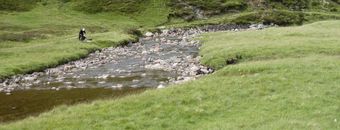
- Location: Cairngorm Mountains, eastern Highlands, Scotland
- Type: Stream
- Catchment area: 2260 ha
- Annual rainfall: 860 mm
- Sampling station altitude: 415 m
- Maximum altitude: 975 m
The Baddoch Burn has been monitored by Marine Scotland Science Freshwater Fisheries Laboratory since 1988. The site was added to the UK UWMN in 2013, extending the alkalinity gradient of sites within the Network as well as providing long-term high-quality chemistry and fish records that are directly compatible with measurements performed in other monitoring sites.